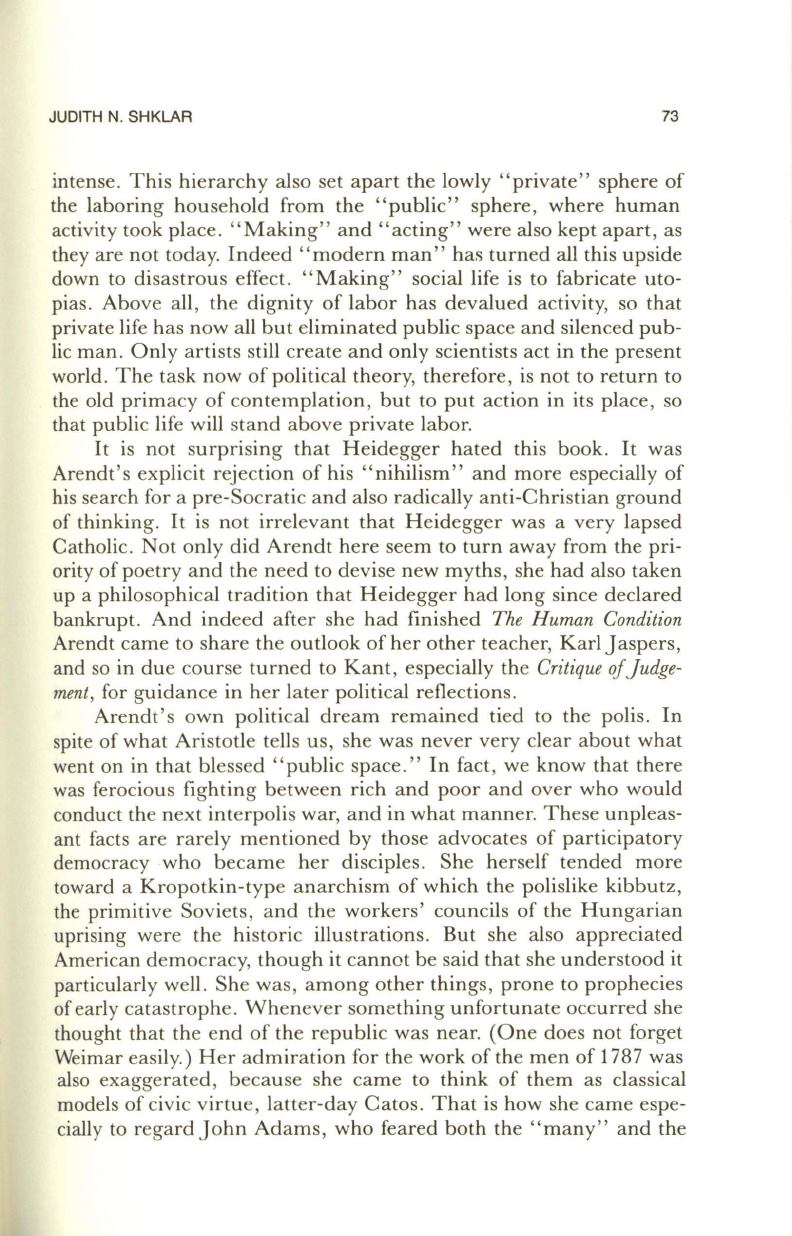
JUDITH N. SHKLAR
73
intense. This hierarchy also set apart the lowly "private" sphere of
the laboring household from the "public" sphere, where human
activity took place. "Making" and "acting" were also kept apart, as
they are not today. Indeed "modern man" has turned all this upside
down to disastrous effect. "Making" social life is to fabricate uto–
pias. Above all, the dignity of labor has devalued activity, so that
private life has now all but eliminated public space and silenced pub–
lic man. Only artists still create and only scientists act in the present
world. The task now of political theory, therefore, is not to return to
the old primacy of contemplation, but to put action in its place, so
that public life will stand above private labor.
It is not surprising that Heidegger hated this book.
It
was
Arendt's explicit rejection of his "nihilism" and more especially of
his search for a pre-Socratic and also radically anti-Christian ground
of thinking. It is not irrelevant that Heidegger was a very lapsed
Catholic. Not only did Arendt here seem to turn away from the pri–
ority of poetry and the need to devise new myths, she had also taken
up a philosophical tradition that Heidegger had long since declared
bankrupt. And indeed after she had finished
The Human Condition
Arendt came to share the outlook of her other teacher, Karl Jaspers,
and so in due course turned to Kant, especially the
Critique ojJudge–
ment,
for guidance in her later political reflections.
Arendt's own political dream remained tied to the polis. In
spite of what Aristotle tells us, she was never very clear about what
went on in that blessed "public space." In fact, we know that there
was ferocious fighting between rich and poor and over who would
conduct the next interpolis war, and in what manner. These unpleas–
ant facts are rarely mentioned by those advocates of participatory
democracy who became her disciples. She herself tended more
toward a Kropotkin-type anarchism of which the polislike kibbutz,
the primitive Soviets, and the workers' councils of the Hungarian
uprising were the historic illustrations. But she also appreciated
American democracy, though it cannot be said that she understood it
particularly well. She was, among other things, prone to prophecies
of early catastrophe. Whenever something unfortunate occurred she
thought that the end of the republic was near. (One does not forget
Weimar easily.) Her admiration for the work of the men of 1787 was
also exaggerated, because she came to think of them as classical
models of civic virtue, latter-day Catos. That is how she came espe–
cially to regard John Adams, who feared both the "many" and the


